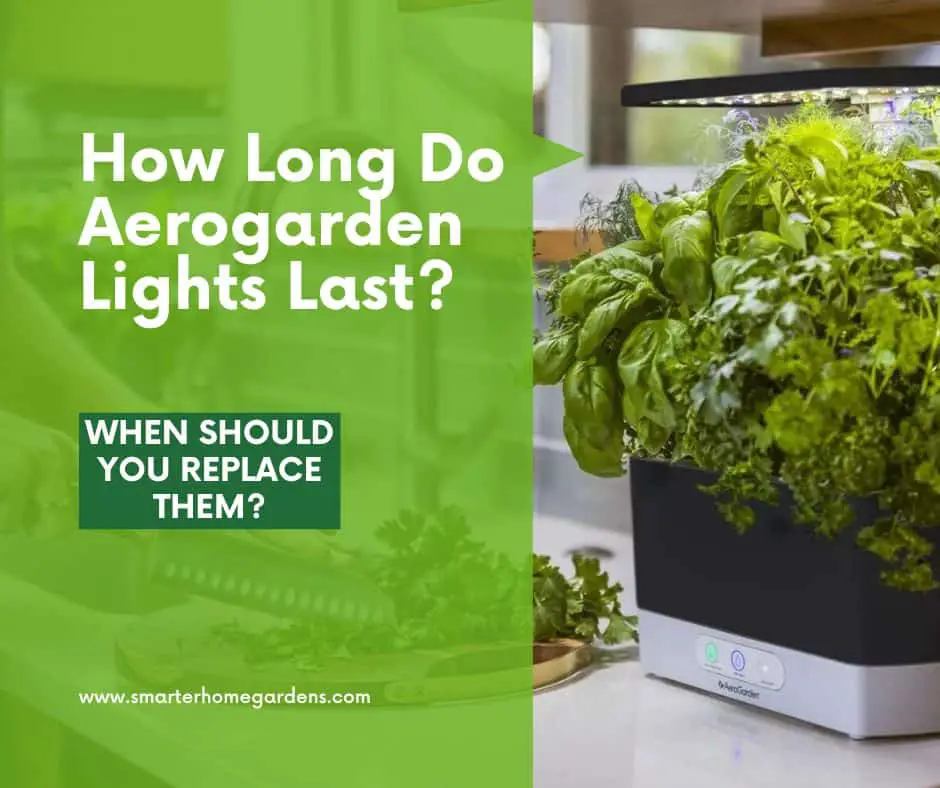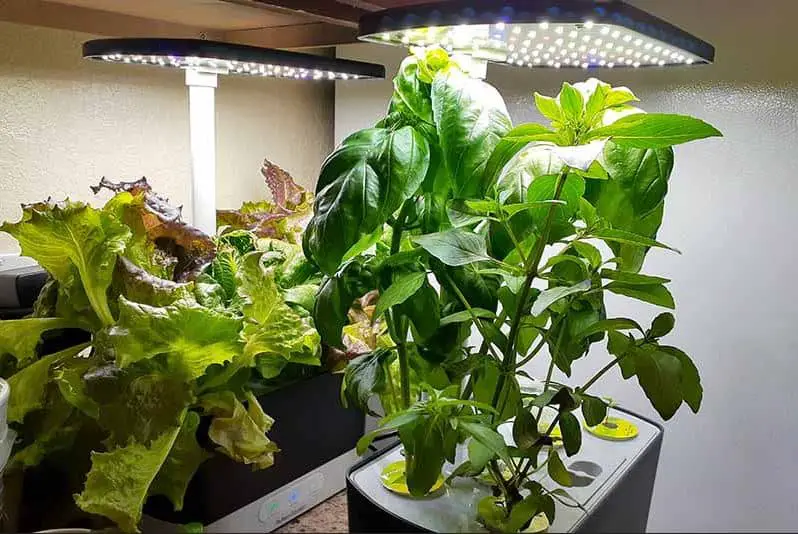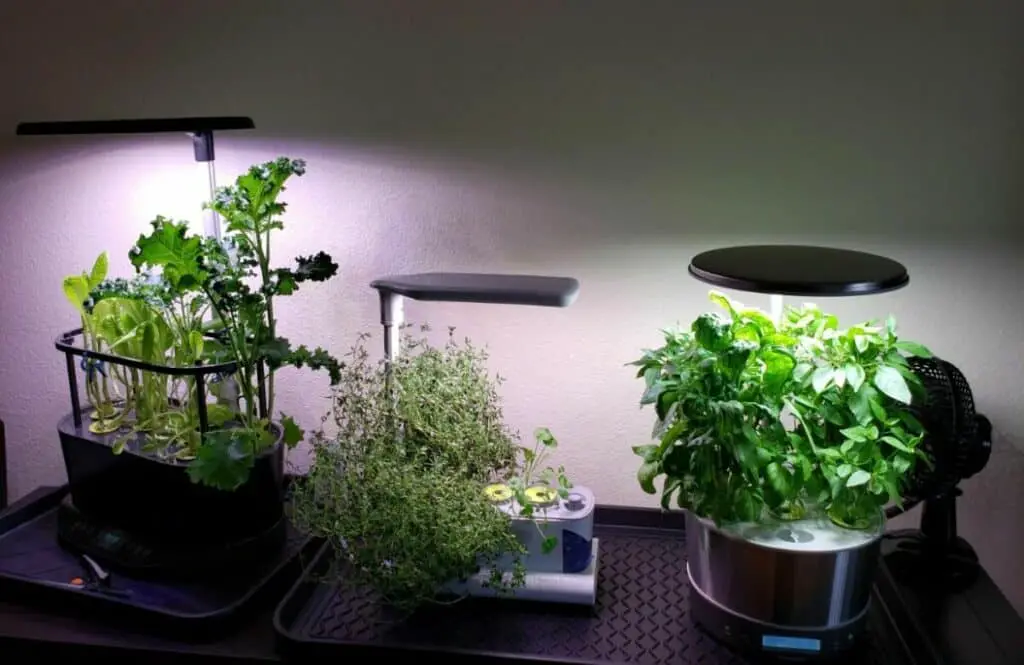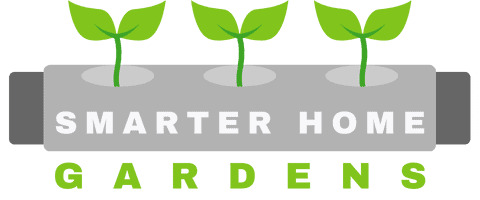
One of the most important and prominent features of any ‘smart garden‘ are the grow lights. Grow lights provide indoor plants with enough light so that they can photosynthesise, produce energy and grow. Without them, your plants’ growth will likely be slow and stunted. But like all lights, they will eventually start to fail and need to be replaced. But how long do they last and when should you consider changing them?
In most cases, the LED lights on an Aerogarden should last 20,000 to 50,000 hours or roughly between 2-4 years with recommended use depending on the system purchased. How long the lights on your Aerogarden lights last will depend on how much you use them and how well you maintain them.
In this article, I’ll explain everything you need to know about your Aerogarden LED lights. We’ll look at what can affect their lifespan, how you can extend it, as well as when they really need to be replaced.
Aerogarden LED lights basics – what do they do?

Aerogarden grow lights provide the ideal spectrum of light with which to grow indoor plants within the Aerogarden system. The LED lights are specifically designed to promote healthy plant growth by providing the correct amount of light at the right intensity for photosynthesis without burning or heating.
The grow lights are sufficient at providing enough light for your plants without the need for natural sunlight.
Types of Aerogarden lights and their lifespans
Aerogardens use automated LED grow light panels that consist of an array of diodes between 10-60 Watts. They are designed to provide a full spectrum of light that is optimal for plant growth. Counter to popular opinion they do not emit any UV light.
The lights are generally very energy efficient and long-lasting (far more than halogen or fluorescent equivalents). This also makes them more environmentally friendly.
The table below estimates the typical LED lifespan of each system based on its wattage and recommended use (around 16 hours per day).
Aerogarden LED grow lights comparison table
| Model | LED Types | Estimated Lifespan |
|---|---|---|
| Sprout | 10W Array | Up to 50,000 hours |
| Harvest Slim/Elite | 20W Array | Up to 50,000 hours |
| Harvest XL | 25W Array | Up to 50,000 hours |
| Bounty Basic | 30W Array | Between 40,000-50,000 hours |
| Bounty | 40W Array | Between 40,000-50,000 hours |
| Bounty Elite | 50W Array | Between 30,000-50,000 hours |
| Farm 12 / XL | 60W Array | Between 20,000-50,000 hours |
| Farm 24Plus / XL / Basic | 60W Array | Between 20,000-50,000 hours |
Note: these are just estimated only and I’ve known LEDs to last far longer (or less) than their stated lifespans. There are things you can do to influence this which I have outlined below.
Tips for extending the life of an Aerogarden lights
An Aerogarden is a self-contained system that requires very little maintenance or fuss. The LED lights should last very well with minimal attention. However, there are a few small things that you can do to minimise the risk of wear and extend their lifespan.
- Avoid overheating – High temperatures can cause LED lights to burn out faster. It’s important to keep your Aerogarden away from any heat sources like radiators to avoid overheating.
- Clean the LEDs regularly – Dust and dirt which can accumulate on the LEDs can also reduce their lifespan and reduce brightness over time. Make sure to clean them regularly for optimal function.
- Avoid frequent switching – Aerogarden lights are set to a timer, so there shouldn’t be a need to switch them on and off manually. However, switching the lights on and off too frequently can cause them to wear out much faster. Stick to the recommended settings and don’t be tempted to play around with them too much.
How to know when to replace an Aerogarden light
Maintaining and replacing the LED lights on your Aerogarden system is an important part of keeping an optimal growing environment. Over time, the intensity of the LED lights can start to fade, which can result in slower growth and lower yields over time. With this in mind, changing the LED light panels every two years is recommended for maintaining maximum light intensity.

However, the lights will likely work well enough beyond this period and since buying new ones can be an expensive recurring cost you may wish to keep them going a bit longer. In this case, keep an eye out for the following signs that your LEDs need to be replaced:
1. The lights are noticeably dimmer or flickering
If you notice your LED array (or individual diodes) start to flicker or dim it’s a pretty good indication that they are reaching the end of their lifespan. Replacing them with new LEDs will help to maintain the optimal level of light needed for growing your plants.
2. The lights become discoloured
Another sign you should be on the lookout for is discolouration. When LED lights start to age the colour can start to fade slightly or become less vibrant. It’s a subtle change but becomes more noticeable with time. At this point, a replacement is needed to maintain optimal efficiency.
3. You notice individual diodes are broken
When diodes are broken then this is also a good indication that your LEDs are coming to the end of their lifespan and should be replaced. You can probably get away with a few diodes breaking without needing to replace the array, but it’s likely that more will continue to do so over time and you will lose lighting capacity that may impact plant growth should it be left too long.
4. The lights struggle to turn on
Obviously, if you are struggling to turn on the LED array at all then you have a problem. There are a few troubleshooting steps to consider which I have listed below. If your system is within warranty I would also suggest reaching out to Aerogarden support for help.
Troubleshooting Aerogarden lights
Lastly, there may be other reasons that your lights are not working properly that does not necessarily mean that they need replacing. Below are a few simple steps you can take to troubleshoot the lights to double-check check it isn’t another issue causing them to fail.
- Check the power and ports – Inspect the power cord and plug socket and clean the connection point. If there is noticeable damage or wear purchase a new cable.
- Check the timer – make sure that the timer or nanny switches are not damaged or broken. If they are, it may be causing your lights to remain off or erratic.
- Check metal contacts for wear – Metal pins and contacts are located at the top and bottom of the arm sections and are designed to pass electricity when snapped into place. To maintain the pins and make sure electricity is passing through they should be clean and properly aligned. You can try to clean these pins/contacts yourself by using a toothbrush or cloth. If the pins are bent, you can try to bend them back into place using a pair of pliers.
Aerogarden Lights Lifespan – Final Thoughts
Aerogarden lights use LEDs which should last between 2-4 years, according to the manufacturer. However, it’s likely that they will outlast this estimate. Knowing when to replace them is important for maintaining the optimal amount of light needed for your plants to grow effectively. If you notice any issues, as described above, you should either troubleshoot the lights or replace them to maintain proper function. If you have any questions or challenges, contact Aerogarden support.
